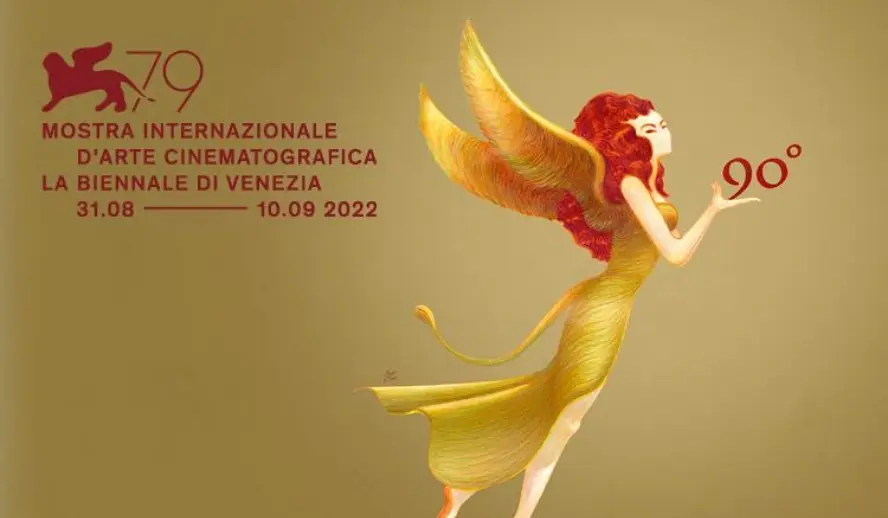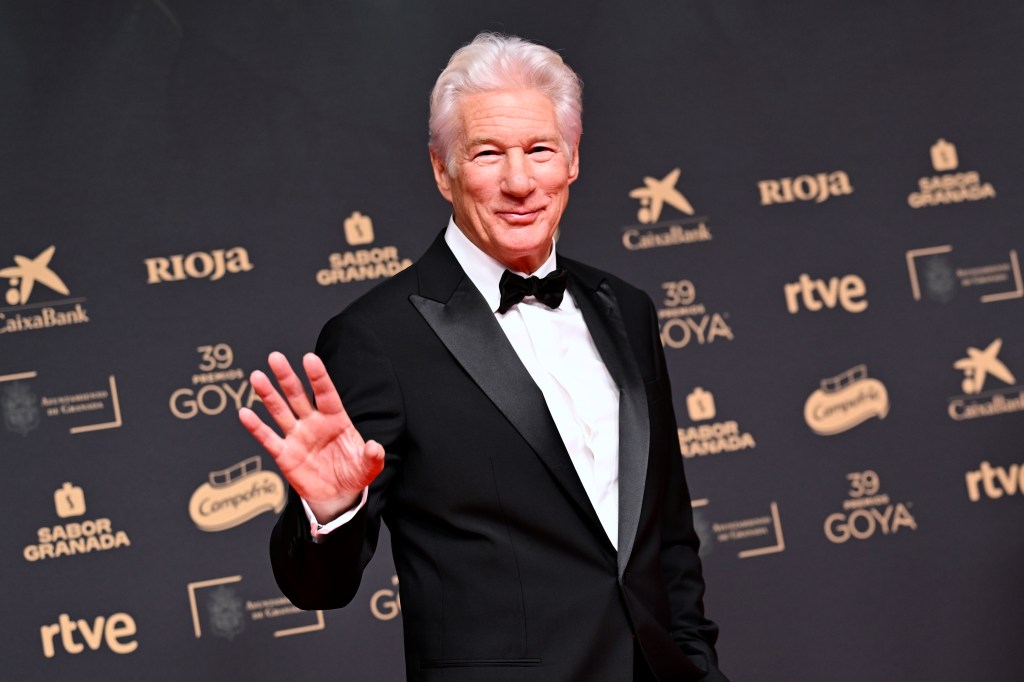Film festivals have long served as the lifeblood of the cinematic world, offering a space where filmmakers and audiences converge to celebrate the artistry and cultural impact of film. From the glittering premieres at Cannes to the edgy showcases at Sundance, these festivals are more than just events; they’re institutions. Yet, as the industry continues to evolve in the face of digital innovation, the future of film festivals hangs in a precarious balance. Will they adapt to the rapid pace of change, or will they become relics of a bygone era?
Things to do:
- Subscribe to The Hollywood Insider’s YouTube Channel, by clicking here.
- Limited Time Offer – FREE Subscription to The Hollywood Insider
- Click here to read more on The Hollywood Insider’s vision, values and mission statement here – Media has the responsibility to better our world – The Hollywood Insider fully focuses on substance and meaningful entertainment, against gossip and scandal, by combining entertainment, education, and philanthropy
The Digital Takeover: Online and Hybrid Models
The COVID-19 pandemic was a watershed moment for film festivals, forcing many to pivot to online formats almost overnight. Festivals like Tribeca and TIFF (Toronto International Film Festival) introduced virtual screenings and panels, bringing the festival experience into living rooms across the globe. This sudden shift wasn’t just a temporary adaptation; it revealed untapped potential for accessibility and global reach. As a result, hybrid models—which combine physical screenings with online components—have gained significant traction.
The hybrid approach addresses several long standing barriers. Physical festivals often exclude those unable to travel or afford expensive passes. By moving partially online, festivals can democratize access, allowing cinephiles from underrepresented regions to participate. For instance, the Sundance Film Festival’s virtual platform in 2021 attracted a record number of attendees from over 100 countries, signaling a hunger for inclusion. As broadband access improves globally, this trend will likely accelerate.
However, challenges remain. The communal aspect of festivals—the shared experience of watching a film in a packed theater—is difficult to replicate online. Festivals must strike a delicate balance, creating digital platforms that complement rather than replace the in-person experience. Technologies like virtual reality and augmented reality may bridge this gap in the future, offering immersive, interactive alternatives to traditional screenings.
WATCH THE TRAILER of the Film and the Revolution: ‘Can I Go Home Now?’
The Children Around the World Continue to Ask the question
The Role of Indie Filmmaking: Changing Landscapes
For decades, film festivals have been essential launchpads for indie filmmakers, providing a platform to showcase their work and secure distribution deals. Classics like ‘The Blair Witch Project’ and ‘Moonlight’ owe much of their success to festival debuts. Yet, the rise of streaming platforms and digital distribution channels is reshaping the indie landscape.
Platforms like Netflix, Amazon Prime, and Apple TV+ are increasingly acquiring indie films directly, bypassing the traditional festival circuit. This trend raises questions about the relevance of festivals in an era where filmmakers can upload their work to YouTube, Vimeo, or Kickstarter, and reach audiences directly. While festivals offer prestige and networking opportunities, some indie creators may opt for the immediacy and global reach of digital platforms.
That said, festivals still hold unique value. They provide a controlled environment for premieres, allowing filmmakers to gauge audience reactions and refine marketing strategies. Additionally, festivals like SXSW and Slamdance focus on fostering a sense of community among creators, something algorithms and digital platforms struggle to replicate. The challenge for festivals will be to remain relevant by integrating more tech-savvy initiatives, such as offering live-streamed Q&A sessions or online masterclasses for aspiring filmmakers.
Related article: Why Queen Elizabeth II Is One Of The Greatest Monarchs | Her Majesty Queen Elizabeth II of United Queendom of Great Britain & Northern Ireland (Video Insight)
Related article: – Want GUARANTEED SUCCESS? Remove these ten words from your vocabulary| Transform your life INSTANTLY
The Rise of AI and Data-Driven Storytelling
Artificial intelligence is poised to revolutionize filmmaking, from scriptwriting to post-production. This innovation could have profound implications for film festivals as well. Imagine a future where festival juries use AI to assist in film selection, analyzing submissions for originality, pacing, and audience appeal. While this may streamline the process, it also raises ethical concerns about artistic integrity and human oversight.
Moreover, data-driven storytelling—where algorithms analyze viewer preferences to guide creative decisions—is becoming more prevalent. This trend could lead to a shift in the types of films showcased at festivals. Traditional arthouse fare might give way to data-backed projects designed to maximize audience engagement. Festivals will need to carefully navigate this tension, preserving their role as champions of artistic expression while embracing technological advancements.
Related article: EVOLUTION: Every Ryan Gosling Role From 1995 to 2020, All Performances Exceptionally Poignant
Related article: EVOLUTION: Every Henry Cavill Role From 2001 to 2021, All Performances Exceptionally Poignant
Related article: All Best Actor/Actress Speeches From The Beginning Of Oscars 1929-2019 | Hollywood Insider
Globalization and Decentralization
Digital innovation is also fostering globalization and decentralization within the festival circuit. Historically, the most prestigious festivals have been concentrated in North America and Europe. However, online platforms are enabling the rise of regional festivals in Africa, Asia, and South America, which can now attract international attention without requiring physical attendance.
This decentralization is democratizing the industry, giving underrepresented voices a chance to shine. For example, the We Are One Global Film Festival, launched in 2020, brought together programming from 21 major festivals worldwide, showcasing films from diverse cultures on a single online platform. Initiatives like this highlight the potential for collaboration and cross-pollination among festivals in the digital age.
At the same time, globalization creates challenges. As festivals expand their reach, they risk losing their unique identities. Sundance’s focus on independent American cinema or Berlinale’s emphasis on political films could be diluted in an effort to cater to broader audiences. Striking a balance between local flavor and global appeal will be key to their future success.
Related article: Understanding the Star Wars Timeline
Related article: A Tribute to Francis Ford Coppola: One of Cinema’s Unforgettable Directors | ‘Megalopolis’, ‘The Godfather’ & More
Related article: #metoo Revolution: Powerful Questions That Need Answers
Related article: FACT-CHECKED Series: Timothee Chalamet and 32 Facts about The Young Superstar
Sponsorship and Monetization in the Digital Era
The shift to digital and hybrid models also impacts how festivals generate revenue. Traditional festivals rely heavily on ticket sales, sponsorships, and merchandise. Online platforms introduce new opportunities for monetization, such as pay-per-view screenings, subscription packages, and virtual meet-and-greets with filmmakers.
However, digital formats come with added costs, from platform development to cybersecurity measures. Festivals must also compete with free content available online, making it crucial to offer unique value propositions. Exclusive premieres, interactive features, and behind-the-scenes content could justify the price of admission in the digital realm.
Sponsors, too, are rethinking their strategies. Brands increasingly favor digital activations over physical presence, leveraging online platforms to reach larger, more diverse audiences. This shift may result in festivals prioritizing digital components to attract high-profile sponsorship deals, further cementing the hybrid model as the future norm.
Related article: Top 10 South Park Characters | Who Makes the Cut? Kenny, Chef, Butters, Towelie, Eric?
Related article: In-Depth Analysis | The Unexpected Queerness of ‘Bob’s Burgers’: Why the Show is an Animated Ally
Predictions for the Future
As the film festival landscape continues to evolve, several trends are likely to shape its trajectory:
- Enhanced Virtual Platforms: Festivals will invest in cutting-edge digital experiences, incorporating technologies like VR, AR, and blockchain to engage audiences in new ways.
- Increased Inclusivity: Online components will make festivals more accessible to global audiences and underrepresented filmmakers, fostering greater diversity in programming.
- Sustainability Efforts: Hybrid models reduce the carbon footprint associated with travel and physical infrastructure, aligning with the industry’s growing focus on sustainability.
- Collaborative Networks: Regional festivals will collaborate more frequently, sharing resources and audiences through digital platforms.
- Evolving Metrics of Success: Festivals will shift from measuring success solely by attendance and box office numbers to include digital engagement and social media impact.
Related article: In-Depth Analysis | The Unexpected Queerness of ‘Bob’s Burgers’: Why the Show is an Animated Ally
Related article: EVOLUTION: Every Chris Evans Role From 1997 to 2020, All Performances Exceptionally Poignant
Conclusion
The future of film festivals lies in their ability to adapt and innovate without losing sight of their core mission: celebrating the art of filmmaking. Digital innovation offers unprecedented opportunities for growth, but it also presents challenges that must be carefully managed. As festivals embrace online and hybrid models, they have the potential to become more inclusive, accessible, and sustainable than ever before.
Still, the heart of the festival experience—the communal joy of discovering new stories together—remains irreplaceable. By blending the best of both worlds, film festivals can continue to thrive as cultural touchstones in an ever-changing industry. The question is not whether they will survive, but how they will redefine themselves for the next generation of cinephiles.
By Jake Yancey
Click here to read The Hollywood Insider’s CEO Pritan Ambroase’s love letter to Cinema, TV and Media. An excerpt from the love letter: The Hollywood Insider’s CEO/editor-in-chief Pritan Ambroase affirms, “We have the space and time for all your stories, no matter who/what/where you are. Media/Cinema/TV have a responsibility to better the world and The Hollywood Insider will continue to do so. Talent, diversity and authenticity matter in Cinema/TV, media and storytelling. In fact, I reckon that we should announce “talent-diversity-authenticity-storytelling-Cinema-Oscars-Academy-Awards” as synonyms of each other. We show respect to talent and stories regardless of their skin color, race, gender, sexuality, religion, nationality, etc., thus allowing authenticity into this system just by something as simple as accepting and showing respect to the human species’ factual diversity. We become greater just by respecting and appreciating talent in all its shapes, sizes, and forms. Award winners, which includes nominees, must be chosen on the greatness of their talent ALONE.
I am sure I am speaking for a multitude of Cinema lovers all over the world when I speak of the following sentiments that this medium of art has blessed me with. Cinema taught me about our world, at times in English and at times through the beautiful one-inch bar of subtitles. I learned from the stories in the global movies that we are all alike across all borders. Remember that one of the best symbols of many great civilizations and their prosperity has been the art they have left behind. This art can be in the form of paintings, sculptures, architecture, writings, inventions, etc. For our modern society, Cinema happens to be one of them. Cinema is more than just a form of entertainment, it is an integral part of society. I love the world uniting, be it for Cinema, TV, media, art, fashion, sport, etc. Please keep this going full speed.”
More Interesting Stories From The Hollywood Insider
– Want GUARANTEED SUCCESS? Remove these ten words from your vocabulary| Transform your life INSTANTLY
– A Tribute to Martin Scorsese: A Complete Analysis of the Life and Career of the Man Who Lives and Breathes Cinema
– Do you know the hidden messages in ‘Call Me By Your Name’? Find out behind the scenes facts in the full commentary and In-depth analysis of the cinematic masterpiece
– A Tribute To The Academy Awards: All Best Actor/Actress Speeches From The Beginning Of Oscars 1929-2019 | From Rami Malek, Leonardo DiCaprio To Denzel Washington, Halle Berry & Beyond | From Olivia Colman, Meryl Streep To Bette Davis & Beyond
– In the 32nd Year Of His Career, Keanu Reeves’ Face Continues To Reign After Launching Movies Earning Over $4.3 Billion In Total – “John Wick”, “Toy Story 4”, “Matrix”, And Many More

Jake Yancey is a product of NYU Tisch and is passionate about engaging in substantial conversation and enriching, multi-faceted dialogue in politics, tv production, and culture. Jake is excited to work at The Hollywood Insider because he believes that Film and Journalism are humanity’s first line of defense against the chaos of an uninformed public sector and so spends his time scouting for relevant stories everywhere. Jake, driven by a strong work ethic and love for people, plans on eventually working at the studios to help develop the stories which have had such a lasting impact on him.



